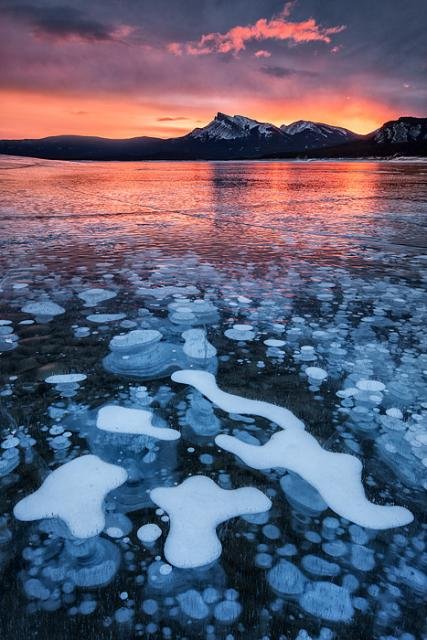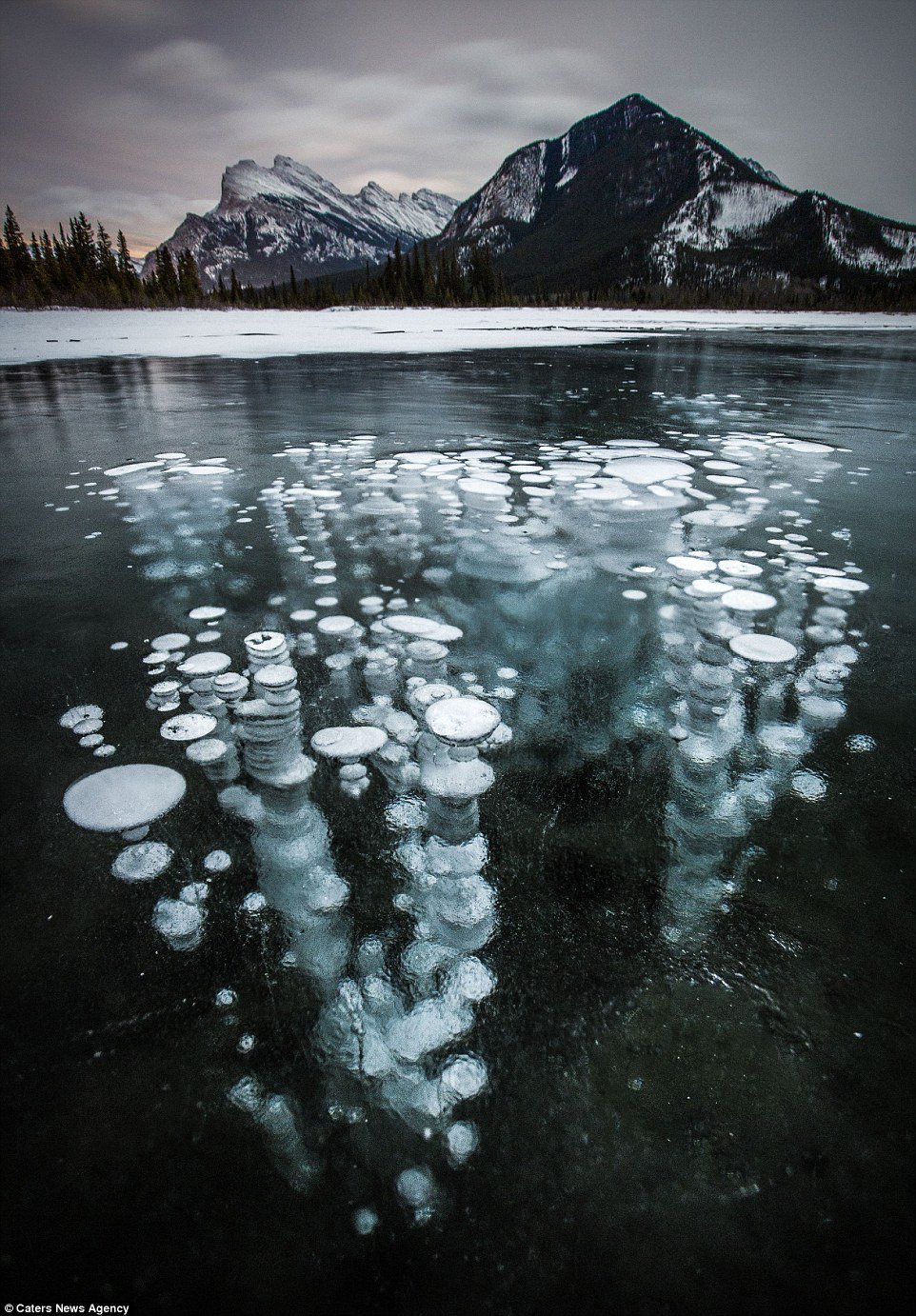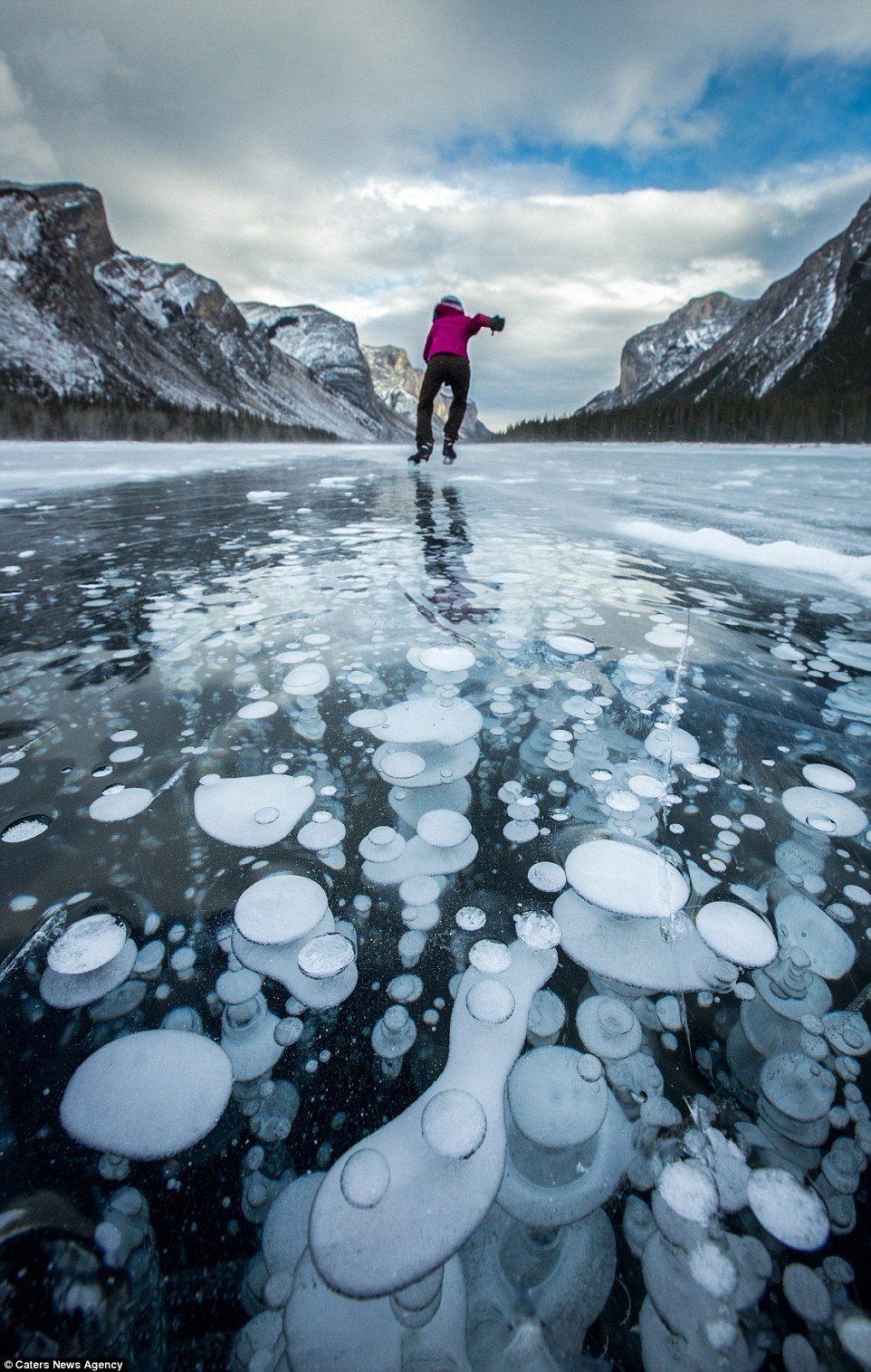
In one of her songs Adele sets fire to the rain, in this post we 're setting fire to...the ice. As contradictory as it may sound flammable ice cubes are real and mother nature knows the recipe, which I'm going to share with you today.
Ingredients
- One lake
- Dead organic matter
- Bacteria-decomposers
Steps
- Put dead organic matter into the lake (anything from plants, trees or dead animals).
- Let them sink.
- Let the bacteria-decomposers munch on them.
- Let the lake freeze.
The result
What do you get if you follow these steps right? A colorless gas that might seem harmless but it's not...methane. Once methane is produced by the decomposition of dead matter, it freezes and forms those magnificent ice bubbles. As seasons change and winter turns to spring, temperatures rise. The ice on the lake starts melting and those seemingly innocent suicide bomber-bubbles make their way to the surface and fade away in the atmosphere.

That's not the only way to produce methane ice cubes. Some of the methane is much older and comes from ancient oceans or even earth's mantle. When this methane ends up on a freezing lake's floor it forms a hard, white, pasty rock, methane hydrate. When the water gets warmer, these rocks fizzle and methane gas gets away and turns into deadly beautiful ice cubes.

Is there anything to worry about?
Yes, scientists have noticed an increase in the amounts of methane in the atmosphere. Methane is a greenhouse gas and if it escapes in the atmosphere it forms a layer blocking sun's rays and trapping them in the atmosphere, which results in a rise in planet's temperatures.
Such lakes can be found in America (Alaska and Canada), Europe (Scandinavia) and Asia (Siberia). The problem is thatthe rise in temperatures is faster in the arctic than in places near the equator. This means the permafrost (rock or soil, at/below the freezing point of water 0°C for two or more years) is slowly melting and emmits more methane gas, which speeds the greenhouse effect. If you consider that a few years ago scientists found enormous, half-mile-wide bubbles in the Arctic Ocean, we certainly have something to worry about.
What can we do?
In case you didn't know, methane is extremely flammable and any presence of fire, flame or sparkle could ignite it. But, unless you're looking to have some fun with nature's fart lighting then why would someone set fire on them? Well, scientists have a pretty good reason to do so, if they want to decrease methane concentration in the atmosphere. When you burn methane, it's no longer dangerous, that's why teams are formed to ignite clusters of methane ice cubes, before they get away.
Watch Katey Walter Anthony, an ecology professor (University of Alaska Fairbanks) and her students setting fire on icy methane in Alaskan lakes:
Could we benefit from it?
As crazy as it might sound, the answer is yes! We could turn the danger into a benefit.
Experts say that there is plenty of carbon stored within those gas deposits, which could become a new energy reserve.
A great example:
About 72 cubic yards of methane gas was discovered deep in Lake Kivu in Ruanda and an extraction project has already started. This project has high hopes, it aims to multiply the energy-generating capabilities of the country, letting it sell electricity to its neighbors.
(More information on the matter can be found in this article "Rwanda Inaugurates Groundbreaking Methane Power Project")

My dear friends I hope you found this post just as exciting as the other two on this series. In case you missed them you can find them here:
Bizarre Natural Phenomena Vol.1 - Volcanic Lightning AKA Dirty Thunderstorm
Bizarre Natural Phenomena Vol.2 - Bioluminescence, The Art Of Creating Light
References
If you like my content you can follow me at @ruth-girl.
Don't forget to check the @steemstem project, a community-driven project meant to promote well-written, high-quality, STEM-related content (STEM as for Science, Technology, Engineering and Mathematics).
And for those interested in education, @steemiteducation is here to join all steemian educators in their common cause of making our job easier, more effective and more fun!
Until our next post,
Steem on, people, and keep smiling!

